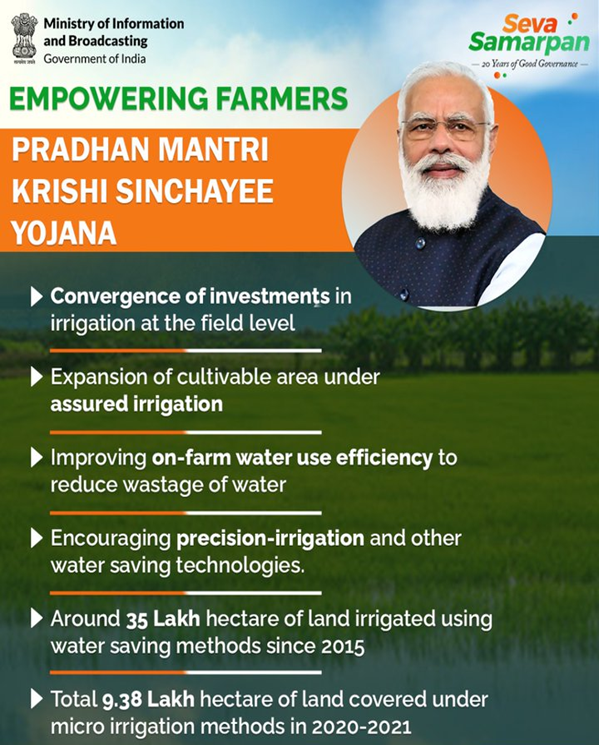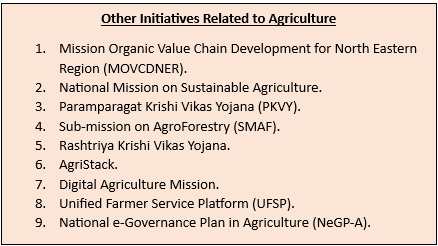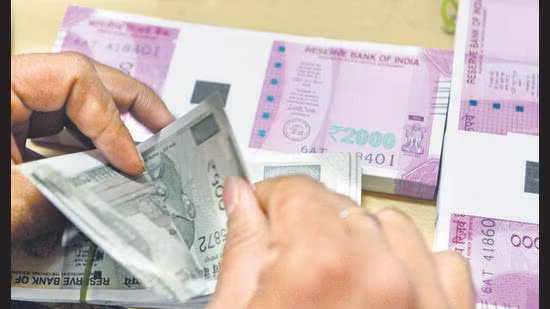- Courses
- GS Full Course 1 Year
- GS Full Course 2 Year
- GS Full Course 3 Year
- GS Full Course Till Selection
- Answer Alpha: Mains 2025 Mentorship
- MEP (Mains Enrichment Programme) Data, Facts
- Essay Target – 150+ Marks
- Online Program
- GS Recorded Course
- Polity
- Geography
- Economy
- Ancient, Medieval and Art & Culture AMAC
- Modern India, Post Independence & World History
- Environment
- Governance
- Science & Technology
- International Relations and Internal Security
- Disaster Management
- Ethics
- NCERT Current Affairs
- Indian Society and Social Issue
- NCERT- Science and Technology
- NCERT - Geography
- NCERT - Ancient History
- NCERT- World History
- NCERT Modern History
- CSAT
- 5 LAYERED ARJUNA Mentorship
- Public Administration Optional
- ABOUT US
- OUR TOPPERS
- TEST SERIES
- FREE STUDY MATERIAL
- VIDEOS
- CONTACT US
Pradhan Mantri Krishi Sinchayee Yojana
Pradhan Mantri Krishi Sinchayee Yojana
27-10-2023

Context
Recently, the inclusion of the Jamrani Dam Multipurpose Project in Uttarakhand under the Pradhan Mantri Krishi Sinchayee Yojana-Accelerated Irrigation Benefit Programme (PMKSY-AIBP) has been approved by the Cabinet Committee on Economic Affairs (CCEA).
What is Pradhan Mantri Krishi Sinchayee Yojana (PMKSY)?
- About:
- In order to increase agricultural access to water, increase the cultivable area under guaranteed irrigation, increase water usage efficiency, and promote sustainable water conservation techniques, PMKSY was introduced in 2015.
- The Central-States share will be 75:25 under this Centrally Sponsored Scheme (Core Scheme).
- The northeastern region and hilly states will share 90:10.
- The Ministry of Jal Shakti released a mobile app in 2020 that allows the geo-tagging of project components funded by PMKSY.
- Objectives:
- Converge irrigation investments at the field level by creating water usage plans at the district and, if necessary, sub-district levels.
- Improve the farm's physical access to water and increase the amount of land that can be farmed with guaranteed irrigation (Har Khet ko pani).
- Water may be used most effectively by integrating its source, delivery, and efficient use through the application of suitable technology and practices.
- Enhance the efficiency of on-farm water use to decrease waste and boost availability in terms of both duration and extent.
- Increase the uptake of water-saving technologies such as precision irrigation, which can produce more crops per drop.
- Improve aquifer recharging and implement sustainable water-saving techniques.
- Assure the watershed approach's integrated development of rainfed areas with respect to preserving soil and water, replenishing groundwater, halting runoff, offering employment opportunities, and other NRM endeavors.
- Encourage farmers and field workers at the grassroots level to participate in extension programs on crop alignment, water harvesting, and water management.
- Examine whether peri-urban agriculture can benefit from the reuse of treated municipal wastewater.
- Components:
- Accelerated Irrigation Benefit Programme (AIBP):
- It was established in 1996 with the intention of hastening the execution of irrigation projects larger than the governments' capacity to finance.
- Under PMKSY-AIBP, 53 projects have been finished to date, adding 25.14 lakh hectares of extra irrigation potential.
- Har Khet ko Pani (HKKP):
- The aim of minor irrigation is to produce new water sources. water body maintenance, repair, and restoration; bolstering the carrying capacity of conventional water sources; building rainwater gathering systems.
- Repair, Renovation and Restoration (RRR) of Water Bodies, Surface Minor Irrigation (SMI), Ground Water Development, and Command Area Development (CAD) are its subcomponents.
- Watershed Development: It involves better soil and moisture conservation techniques such as treating ridge areas, treating drainage lines 5, collecting rainwater, conserving moisture in-situ, and other related actions on a watershed basis. It also involves the efficient management of runoff water.
- Formulation:
- Integrated Watershed Management Programme (IWMP) - Department of Land Resources, Ministry of Rural Development.
- Accelerated Irrigation Benefit Programme (AIBP) - Ministry of Water Resources, River Development & Ganga Rejuvenation (now Ministry of Jal Shakti).
- On-Farm Water Management (OFWM) - Department of Agriculture and Cooperation (DAC).
- Implementation: State irrigation plans and district irrigation plans allow for decentralized implementation.




